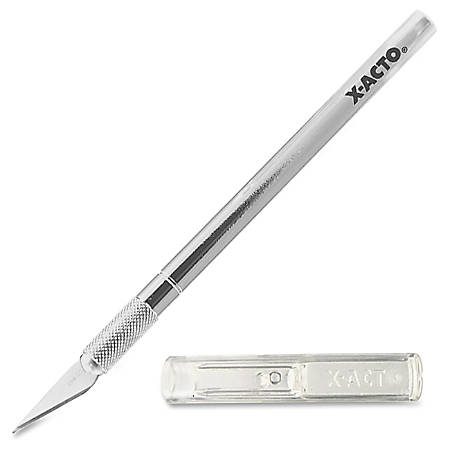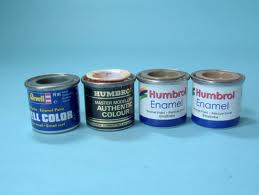Hi guys, I've been out for 20yrs doing this, and I can see that there's a lot of techniques and practices to acchieve an amazing finishing. I'll be focusing on aircrafts now, 1/48, starting with WWII and later moving to modern ones. I'd love to get some advices and specially when it comes to tools, brands, etc.
Here's what I've seen so far in terms of practices, it may vary depending on the modeler, but in general lines goes like this:
Work on the cockpit, painting and adding details, then start assembling the fusselage and outside, adding putty and sanding to fix seams, re-adding panel details with small saws or a tool to mark panels, then masking interiors or holes like landing gear, and applying a primer coat. Then depending on artist, doing a pre-shade, or start with black primer and work from there. After that, doing color, sometimes a little shading for panels or highlights, then applying a clear coat, then decals with a solution to settle them, then another clear coat, and work on weathering, this could require panel line wash, working with oils, pastels, and other techniques. After all that, assemble other parts (could differ) and apply a final clear coat again.
So my question for this is basically are basically these:
- When you apply clear coats after base color, is it a shiny coat? (that's what I've seen all the time) and after applying the decals, is it same glossy coat? And final clear coat is matte? or semi matte?
- For settling decals, you use a settler, and then a softer on top?
- I've seen modelers use alcohol for airbrush paiting? I've always use thinner, how does that work? Is it also thinner based paints for that?
And here's what I don't know what to get and need help with if you guys can suggest me brands and types so I can buy:
- Types of glue? I've seen something like Tamiya Thin Cement which is like a brush type tip, and then I've seen anotherone that has a long tip, more precise
- Putty for sealing gaps and fixing errors
- Thinners and at least an array of 10 or 15 colors to start that I can use and mix to paint most of aircrafts (WWII fighters to start)
- Oil paints brands? for weathering and doing a base paneling marking weathering.
- Pastel for dusty and weathering? I've seen like crayons that are used for this.
- Airbrush and compressor? I had the Iwata Eclipse Hp-Cs in mind
- And anything else you guys think I'll be needing
I know it's a lot, sorry for that, but my idea is to get a cheap kit that has enough detail (maybe this) , so I can start practicing and getting used to it again, after 20 yrs I'm so outdated, and the most I did was painting with airbrush, but it wasn't anything too crazy.
I'll be testing mostly painting, masking, weathering techniques and adding details, and overall pipeline from start to finish. And for this I'd like to have at least most of the tools so I can go to town re-intruducing myself again to the hobby, learn and do all mistakes in those test kits so I can then move into actually starting my collection :P
Thanks guys, sorry for it been so long!
Here's what I've seen so far in terms of practices, it may vary depending on the modeler, but in general lines goes like this:
Work on the cockpit, painting and adding details, then start assembling the fusselage and outside, adding putty and sanding to fix seams, re-adding panel details with small saws or a tool to mark panels, then masking interiors or holes like landing gear, and applying a primer coat. Then depending on artist, doing a pre-shade, or start with black primer and work from there. After that, doing color, sometimes a little shading for panels or highlights, then applying a clear coat, then decals with a solution to settle them, then another clear coat, and work on weathering, this could require panel line wash, working with oils, pastels, and other techniques. After all that, assemble other parts (could differ) and apply a final clear coat again.
So my question for this is basically are basically these:
- When you apply clear coats after base color, is it a shiny coat? (that's what I've seen all the time) and after applying the decals, is it same glossy coat? And final clear coat is matte? or semi matte?
- For settling decals, you use a settler, and then a softer on top?
- I've seen modelers use alcohol for airbrush paiting? I've always use thinner, how does that work? Is it also thinner based paints for that?
And here's what I don't know what to get and need help with if you guys can suggest me brands and types so I can buy:
- Types of glue? I've seen something like Tamiya Thin Cement which is like a brush type tip, and then I've seen anotherone that has a long tip, more precise
- Putty for sealing gaps and fixing errors
- Thinners and at least an array of 10 or 15 colors to start that I can use and mix to paint most of aircrafts (WWII fighters to start)
- Oil paints brands? for weathering and doing a base paneling marking weathering.
- Pastel for dusty and weathering? I've seen like crayons that are used for this.
- Airbrush and compressor? I had the Iwata Eclipse Hp-Cs in mind
- And anything else you guys think I'll be needing
I know it's a lot, sorry for that, but my idea is to get a cheap kit that has enough detail (maybe this) , so I can start practicing and getting used to it again, after 20 yrs I'm so outdated, and the most I did was painting with airbrush, but it wasn't anything too crazy.
I'll be testing mostly painting, masking, weathering techniques and adding details, and overall pipeline from start to finish. And for this I'd like to have at least most of the tools so I can go to town re-intruducing myself again to the hobby, learn and do all mistakes in those test kits so I can then move into actually starting my collection :P
Thanks guys, sorry for it been so long!

 Micro Sol, however, I wouldn’t want to do without for any decal to be applied on a curved surface or over detail.
Micro Sol, however, I wouldn’t want to do without for any decal to be applied on a curved surface or over detail.


Comment